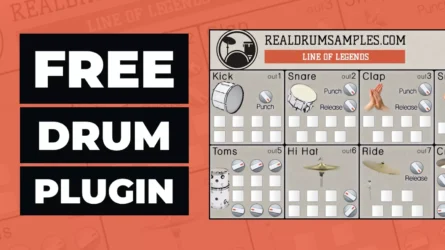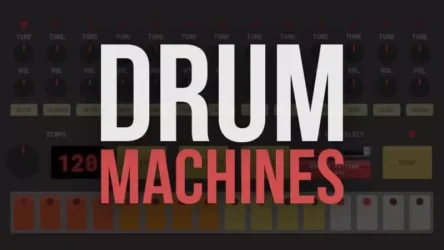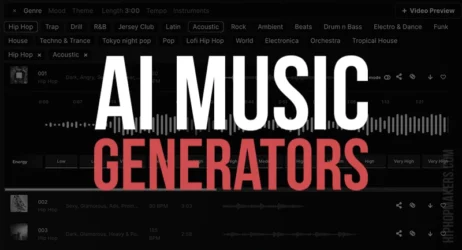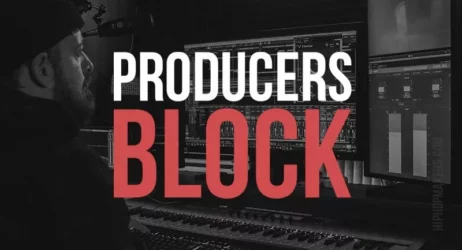This brief guide will answer what is Indie Music, provide examples of Indie Music, and break down the different types of indie music.
What Is Indie Music?
Indie music refers to music created by independent musicians who are not signed to major record labels. Indie is not a single music genre since all musicians and artists do not play the same genre. Indie is more of an umbrella term that categorizes musicians and bands based on their recording methods.
- What Is Indie Music
- Examples Of Indie Music
- What Does It Mean To Be Indie
- Why Is It Called Indie Music
- Is Indie A Music Genre
- How Do You Make Indie Music
- Where Can I Find Indie Music
- Instruments Used In Indie Music
- Is Indie A Style Of Music
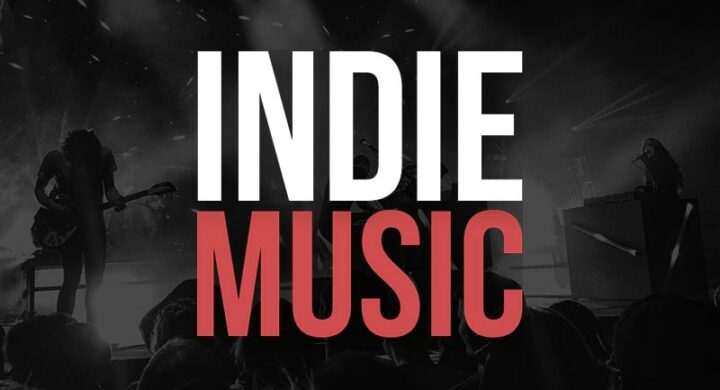
What Is Indie Music?
The Indie genre as a whole might be confusing since everyone interprets it differently, and this is due in part to its numerous subgenres and the fact it continues to grow.
But we can all agree that the music has an off-kilter edge and incorporates aural characteristics of the post-punk era’s original artists’ independent attitude. Artists circumvented large record companies to release music on their terms and became creative with their marketing by creating their cover art.
Then they started their labels and clubs and generally distinguished themselves in the DIY punk spirit. Why? To get their music heard without having to spend a lot of money on marketing.
Nowadays, indie music is a catch-all phrase encompassing an array of sounds, styles, and attitudes that have branched off from its originators.
So, ‘indie’ stands for independent, a term used to designate musicians who produced and distributed their music rather than going via a label. However, the phrase has grown much beyond its initial meaning.
Many independent musicians are now signed to major labels. The term “indie music” now refers to a sound, an attitude, or a different way of producing music. These days, independent music is hardly referred to be “indie” in a traditional sense!
The roots of indie music can be traced back to the 1970s and the DIY punk drive. Artists who pushed the boundaries of mainstream pop sound were not signed to major record companies in the 1970s because their unconventional approach was judged uncommercial.
This stretch of boundaries was a welcome counterpoint to major record firms’ manufactured pop, emo, and alternative rock. Even if the judgment is still divided on defining independent music, it retains the characteristics of its beginnings today.
What Are Examples Of Indie Music?
The term “indie” refers to a self-sufficient person. When people talk about indie music, they’re referring to music created by people who aren’t affiliated with large record labels (mainly rock and roll groups and artists).
Indie music may also be quite experimental because individuals experiment with new and varied sounds. Rock music, house music, and pop music are all examples of different styles.
Indie rock and independent pop are two examples of what is referred to as indie music. Indie kids are a stereotyped group of teenagers that like listening to indie music.
What Does It Mean To Be Indie?
Independent musicians that aren’t signed to major labels create indie music. However, the term “indie” encompasses much more.
“Indie” as a noun means “an indie-pop group, record label, or film firm,” according to Google, which doesn’t tell us anything. It also defines indie as “not belonging to or affiliated with a major record or film company,” which tells us a little more.
The term “Indie” dates back to the 1920s and referred to film production outside “The Big 5” studios, including Paramount and Warner Bros.
Independent means “unpolished,” as in the type of music that a collegiate basement band might create when it comes to music.
The term “indie” initially applied to film production. Still, in the 1970s, there was a shift away from big record companies and toward experimentation and the freedom to practice their profession without interference from major labels.
Why Is It Called Indie Music?
The name comes from “independent,” which refers to a record label independent of commercial, mainstream record labels. Independent record labels like Rough Trade and Creation were around long before the legendary labels of the UK post-punk era.
In the 1950s and 1960s, independent companies like Sam Phillips’ Sun Records and Berry Gordy’s Motown were common; these auteurist founders frequently took on A&R, management, engineering, and production chores and controlled the manufacturing and distribution processes.
On the other hand, Sun Records’ country and blues (Johnny Cash, B.B. King) and Motown’s soul (Smokey Robinson, The Jackson 5) catalogs were never considered indie. That’s because, visually, indie music has come to symbolize more than just being associated with a small label.
Post-punk, new wave, and “alternative” music published in late-1970s UK independent labels gave rise to the term “indie” as a recognized musical genre description.
Is Indie A Music Genre?
Because of its affiliation with indie pop and indie rock, many people believe independent music to be a genre, and it isn’t a musical genre in and of itself.
Indie is often referred to as an attitude. Indie artists have more freedom to express themselves and produce music without the constraints and limits imposed by a record label. They also have the flexibility to create music videos and distribute their songs in whichever way they want.
Indie music is divided into subgenres, such as indie rock and indie pop, based on the music of individual artists. They’re similar to ordinary rock and pop, except that independent musicians perform them.
In the beginning, independent musicians were not interested in fame or money, they were passionate about music and played it to express themselves.
Things changed over time, and independent performers began to earn international acclaim. The Arctic Monkeys and Tame Impala are two excellent examples.
As a result, many individuals predict that indie music will eventually supplant ‘alternative music’ as the umbrella word for non-mainstream music.
How Do You Make Indie Music?
Not every indie song uses the same instruments or has the same lyrical approach. The following are some recommended characteristics of typical indie bands.
- Begin with a percussion instrument and build the rest of the instruments around it. A drum kit and shakers might be used. The speed should be lively but not excessively so.
- Decide on the subject of the song. It makes no difference if the issue is distinct and independent. All you have to do now is come up with an engaging and thought-provoking manner to convey it. So pick a topic that interests you and get started.
- Make the most important tracks. Guitars (acoustic or electric; if using electric, avoid distortion), a lovely but simple bassline, and the primary vocals will be used.
- You may write about anything as long as it isn’t sad. You can write in free verse but make an effort to rhyme. Your lyrics should be lighthearted and intimate.
- Now read over each verse and remove any unnecessary words. Remove any extraneous information that doesn’t truly belong until the text flows.
Where Can I Find Indie Music?
It isn’t easy to find the ideal tune. The music library might appear to be a daunting task to tackle. In many respects, looking for new music is similar to going on a hunt – nothing is certain, and patience is required.
Below are some of the tips to find indie music:
Find out what shows are playing near you: We often discover new music and indie bands by listening to the recommended tracks on various streaming sites.
Speak with your friends: Talking to friends is the best method to find new music. Be sociable when it comes to music you enjoy, and listen to what others say about it.
Listen to music on Soundcloud and Spotify: SoundCloud is a significant player since musicians don’t have to pay for a distributor, and therefore they can distribute their music for free.
Invite your friends to listen to your Soundcloud: We normally learn about music from each other. We listen to music on Soundcloud, and because we share the account, we can see recommended artists based on previous listens.
What Instruments Are Used In Indie Music?
We’re lucky to get a synth or a Broken Social Scene-style symphonic piece in indie music, heavily saturated with guitar/bass/drums combinations. But now and again, a band will break the mold, go for something a bit different, and blow our minds.
These are the most distinctive instruments in indie rock.
Guitars
Guitars are commonly found in Indie music.
Hurdy-Gurdy
The hurdy-gurdy, sometimes known as a wheel fiddle, is a string instrument in the European Middle Ages.
Buke
Gase and Brooklyn’s Buke are in charge of putting together a unique sound using a range of handcrafted instruments.
Singing Saw
The ancient handsaw may be channeled to an ethereal effect with a bow and some willpower. Julian Koster has retained the century-old practice alive in Neutral Milk Hotel and his solo project known as The Music Tapes.
Is Indie A Style Of Music?
Numerous independent musicians do not fall into a defined, single musical genre or style and create self-published music categorized into diverse genres. The term indie is very often used to describe a music genre ( Indie Pop & Indie Rock Music ).
As a music genre term, Indie can include music that is not independently produced, and as a genre term, “indie” may include music that is not independently produced.
The word ‘indie’ or ‘independent music’ dates back to the 1920s, when it was initially used to describe independent cinema businesses before being expanded to include independent bands and record producers.
Summary of Indie Music
Independent music is created by musicians who are not signed to a major record label. Musicians and artists who play independent music do not all play the same genre, and Indie refers more to a broad category of musicians who record using their own methods.
Indie music, short for independent, is a vibrant part of the music industry, showcasing creativity and ingenuity from indie artists around the world.
While the indie music definition varies, it generally refers to music produced independently, often by bands and artists on independent labels. This is quite a contrast to music created under the constraints of major record labels.
Indie music artists demonstrate a broad range of genres, from alternative rock bands to those experimenting with electronic music.
Many indie artists, such as those found in the indie pop scene, blend styles and genres, generating an eclectic indie sound. Their music, often laced with experimental elements, can range from indie pop to garage rock.
Some might think that commercial success is limited to those signed by big record labels. However, indie bands are achieving mainstream success and influencing mainstream music.
This success often comes from hard work and effective music promotion. Indie artists frequently make their own music videos, and despite not always having the backing of commercial record labels, many artists manage to thrive.
Indie music originating from independent labels is flourishing within the indie scene. Indie rock artists, indie pop artists, and even bands considered alternative rock, continue to push boundaries in the indie music scene. This independent spirit is a testament to the creative freedom that independent artists enjoy, a liberty that is often curtailed under major labels.
The indie label, whether it supports an indie band, an indie rock band, or any independent artist, tends to encourage artistic exploration, an attribute that has become a cornerstone of the indie music definition.
Such a nurturing environment has led to indie bands and indie rock bands becoming iconic bands in their own right.
Even as many artists sign with major labels, many others choose to remain independent, valuing the freedom to make their own music. Major labels tend to focus on commercial success and popular music, a business model that might not always align with the creative goals of the indie artist.
In the end, the indie music genre, from its role in the indie pop scene to its influence on alternative rock and electronic music, has not only reshaped the music industry but also popular culture.
Indie music has found its way into mainstream culture, on radio stations and beyond, thereby proving that indie artists have more than just a niche audience.
In conclusion, indie music, despite its vast range of sounds and genres, is a testament to the power of creative freedom and the independent spirit. Regardless of whether it’s an indie band or an indie pop artist, the impact of indie music is undeniable.
They bring a refreshing alternative genre to the table, showing that popular music is not solely the domain of the major label. It is the unique mix of independent artists, independent labels, and unique sounds that keep the indie scene vibrant and ever-evolving.
I hope you found this information on indie music helpful.

